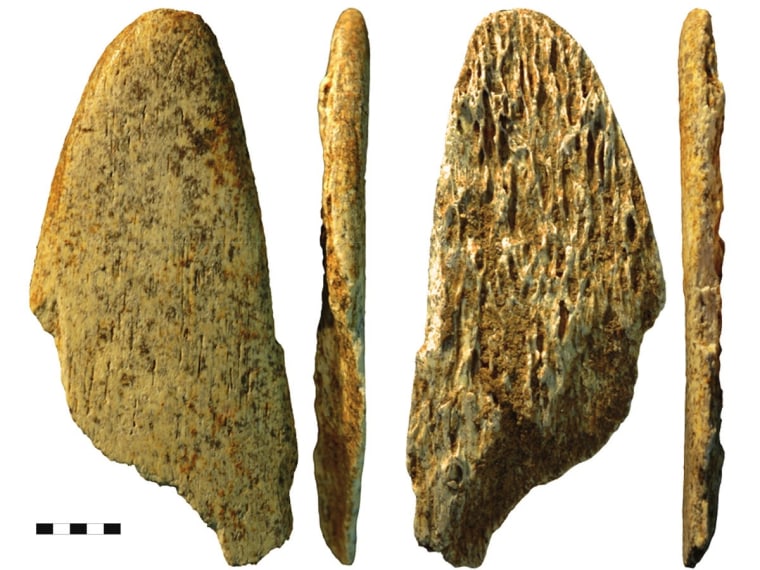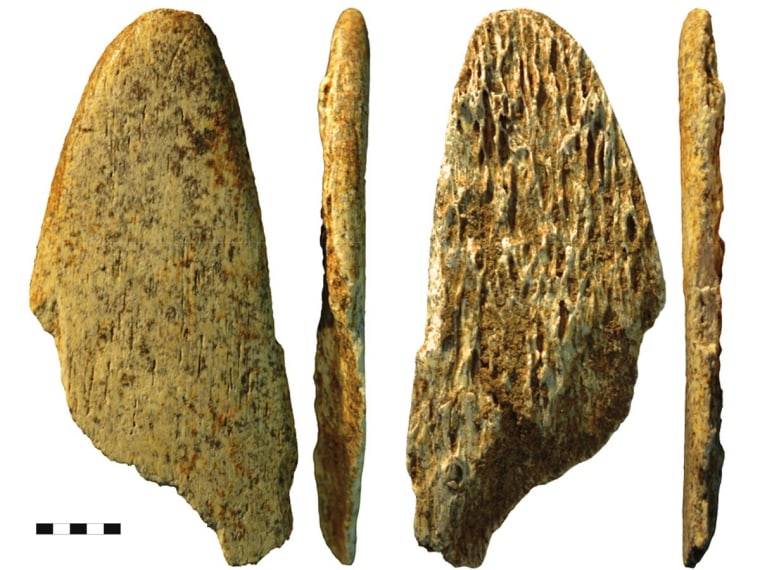
Neanderthals could have taught modern humans a trick or two. Newly discovered rounded, pointy rib tips of a 45,000-year-old grazing animal, likely used to condition hides, suggests that Neanderthals were fashioning sophisticated tools before humans arrived on the scene.
Chunks and fragments of rib bones, dating back to up to 47,000 years ago, were found at two different Neanderthal sites in southern France. The new evidence offers the possibility that that modern humans, arriving in Europe from Africa picked up these skills from the Neanderthals, as similar-shaped tools have been found in more recent modern human dwellings.
Of course, it's also possible that the two groups arrived at the same technology independently.
The new fragments — named for the French "lissoirs" for "smoothener," or "smoothening" — are the oldest such found anywhere, a team of researchers report in the Aug. 12 edition of the Proceedings of the National Academy of Sciences. Previously, it was understood that modern humans were the only hominids in Europe using these specially designed tools, which makes the new crop's location at a Neanderthal site particularly interesting.
Other, older Neanderthal bone tools, some made from the ribs of mammoths, have been found, but those were chipped and chiseled like stone tools were, initially indicating that Neanderthals were not treating bone as a new material.
The new lissoirs are the first evidence of "Neanderthals recognizing that you can do other things with bone," Shannon McPherron, an anthropologist at the Max Planck Institute for Evolutionary Anthropology, and one of the leads on this new study told NBC News. He said the hominids were probably aware of the specific, flexible, properties of the material, that likely came from a reindeer or red deer.
The researchers surmise that the Neanderthals used the tools a little like a rolling pin, to apply a constant pressure on the animal hide, compressing it for flexibility and smoothness.
To understand what the tools were used for, the authors fashioned similar tools the ribs of a cow and used them as to polish a modern animal hide. The chips and scratches on the cow bone closely resembled the wear-and-tear marks on the ancient fragments, as well as those on modern human lissoirs from thousands of years later.
While his colleagues will build several more replicas of lissoirs in the lab, and wear-test them in various ways, McPherron's next investigations will survey even older Neanderthal sites for similar tiny bone fragments. "The obvious question is if we move back in time, do we still find these," he said.
More about Neanderthal-human relationships:
- Scientists find medicinal plants caught in Neanderthal teeth
- Neanderthals had sex with humans, says DNA
- Shocking new theory: Humans hunted, ate Neanderthals
In addition to Shannon McPherron, the authors of "Neandertals made the first specialized bone tools in Europe" published on August 12 in PNAS, include: Marie Soressi, Michel Lenoir, Tamara Dogandzic, Paul Goldberg, Zenobia Jacobs, Yolaine Maigrot, Naomi L. Martisius, Christopher Miller, William Rendu, Michael Richards, Matthew Skinner, Teresa Steele, Sahra Talamo and Jean-Pierre Texier.
Nidhi Subbaraman writes about science and technology. Follow her on Facebook, Twitter and Google+.
